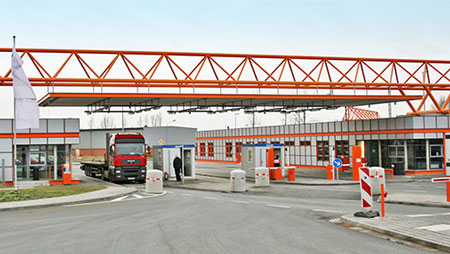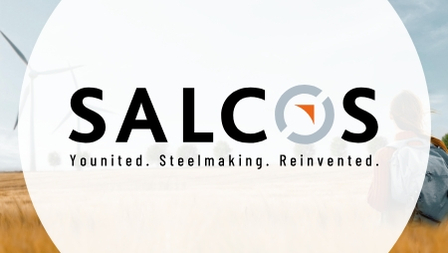Lean and Green: Logistics at Salzgitter Flachstahl
24.02.2016 | Salzgitter Flachstahl GmbH
Lean and Green: Logistics at Salzgitter Flachstahl

Faster, leaner, cleaner – The logistics area at Germany's second largest steel manufacturer, Salzgitter Flachstahl, counts equally on excellence, efficiency and resource conservation when optimizing company processes. In 2006, the company had already set a goal to reduce transport emissions of equivalent CO2 (CO2e) by at least 20% by the year 2020. The crucial idea for sustainable emission reductions was to avoid wasting resources. Cost consciousness and environmental awareness go hand in hand.
In keeping with the motto "Lean and Green", the Salzgitter Flachstahl logistics experts have developed and implemented a rigorous set of measures. They cut back on special trips, combined loads and switched transports to rail traffic. The preferred use of low-emission trucks was also arranged in cooperation with the haulers.
But the Salzgitter Flachstahl logistics experts did even more: many unnecessary expenditures arise as the result of a lack of transparency, poor coordination and waiting times before the actual logistics services. Therefore a change in the self-perception of logistics was elementary: a move away from transport, storage and load transfer service providers and towards active process managers along the entire supply chain. From the order through to the delivery, the Logistics Department analyzed, standardized and largely automated all processes. Using adaptively developed software and networking all internal IT systems, including those to customers and service providers, today the logistics employees at Salzgitter Flachstahl have real-time access to all the information they need to make decisions. The intelligent systems visualize fields where action needs to be taken so that today a significantly larger volume is processed more speedily and reliably with greater stability. Ultimately, all process participants have access to planning for cost and CO2e -optimized transactions, as well as to real-time information. Both the sales area and customers have access to information via a platform so that significant reductions in both complaints and inquiries have been possible.
In order to reduce the disadvantage with regard to time when rail transport is used instead of trucks, the Salzgitter Flachstahl logistics area set up its own network of regularly scheduled trains, called the Salzgitter Logistics Train (SLoT). In contrast to usual individual wagon traffic with times of several days, today the SLoT system achieves transport times in the range of 24 hours. As a result the coil is transported on a wagon with lower CO2e emissions than on a truck.
What has been missing until now in the multitude of measures put into action since 2006 was a corresponding evaluation method to quantify the success. Working with the Fulda University of Applied Sciences, a computational model to determine the CO2e emissions was created. This is based on the EN 16258 standard, which was just released in 2014. That means that Salzgitter Flachstahl is one of the first companies to use this standard as a basis to determine the success of its sustainability strategy in logistics. The result: at the end of 2015, Salzgitter Flachstahl had already reduced the emissions in the logistics area by 12.2% compared to 2006, despite structural shifts such as a strong growth in overseas traffic.

And now is the time for the next big step: On May 8, Salzgitter Flachstahl reached an agreement with the Deutsche Bahn. Starting in 2017, at least 40% of the entire ore transport from Hamburg to Salzgitter, which totals more than six million metric tons a year, will be transported with electricity generated with climate-neutral means.
The Salzgitter Flachstahl logistics area is consequently rigorously continuing the implemented strategy of systematic measures for transport optimization while simultaneously reducing CO2 emissions: Truly lean and green.







